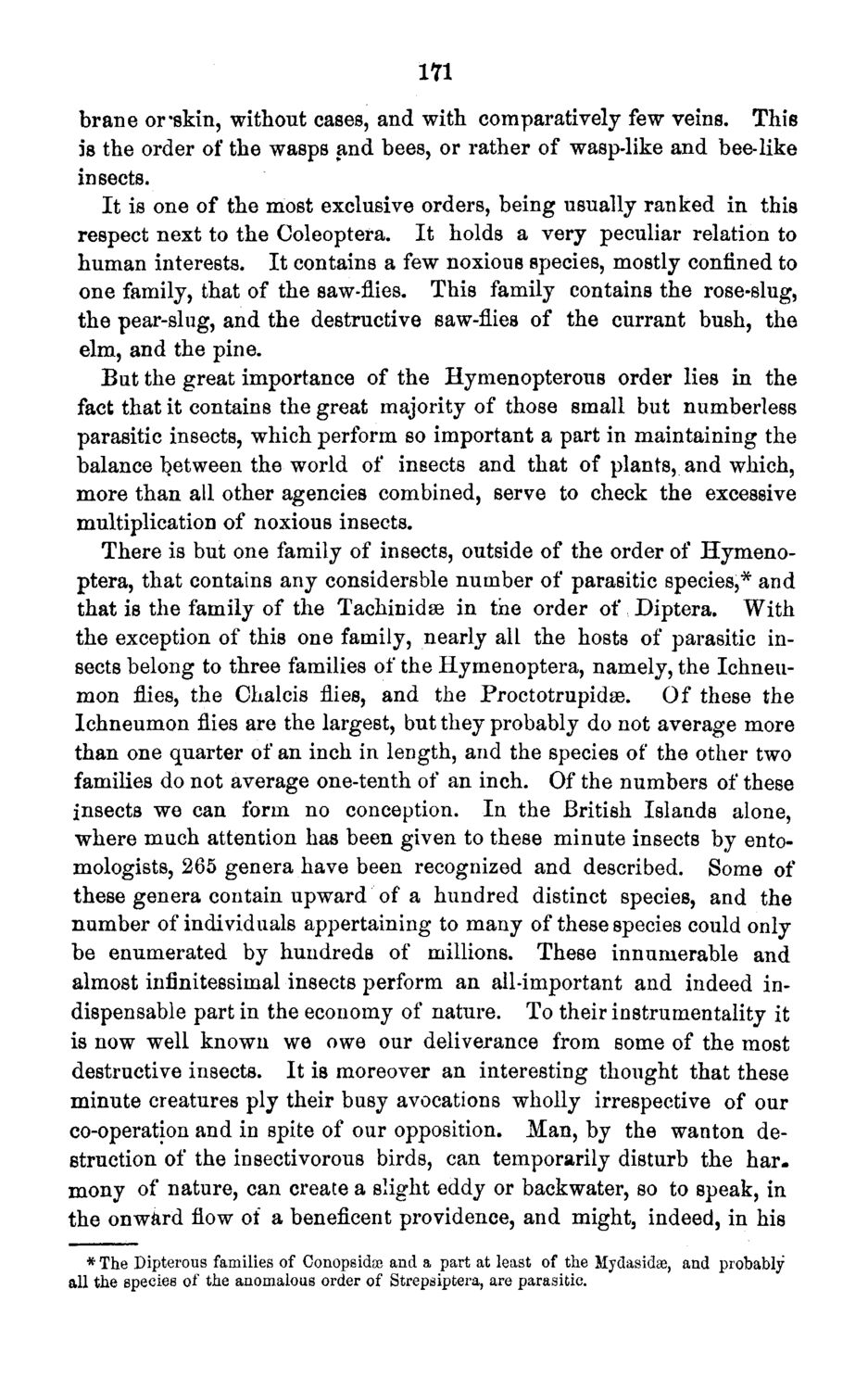| |
| |
Caption: Board of Trustees Minutes - 1871
This is a reduced-resolution page image for fast online browsing.

EXTRACTED TEXT FROM PAGE:
171 brane or'skin, without cases, and with comparatively few veins. This is the order of the wasps and bees, or rather of wasp-like and bee-like insects. It is one of the most exclusive orders, being usually ranked in this respect next to the Coleoptera. It holds a very peculiar relation to human interests. It contains a few noxious species, mostly confined to one family, that of the saw-flies. This family contains the rose-slug, the pear-slug, and the destructive saw-flies of the currant bush, the elm, and the pine. But the great importance of the Hymenopterous order lies in the fact that it contains the great majority of those small but numberless parasitic insects, which perform so important a part in maintaining the balance between the world of insects and that of plants, and which, more than all other agencies combined, serve to check the excessive multiplication of noxious insects. There is but one family of insects, outside of the order of Hymenoptera, that contains any considersble number of parasitic species,* and that is the family of the Tachinidse in the order of Diptera. With the exception of this one family, nearly all the hosts of parasitic insects belong to three families of the Hymenoptera, namely, the Ichneumon flies, the Chalcis flies, and the Proctotrupidse. Of these the Ichneumon flies are the largest, but they probably do not average more than one quarter of an inch in length, and the species of the other two families do not average one-tenth of an inch. Of the numbers of these insects we can form no conception. In the British Islands alone, where much attention has been given to these minute insects by entomologists, 265 genera have been recognized and described. Some of these genera contain upward of a hundred distinct species, and the number of individuals appertaining to many of these species could only be enumerated by hundreds of millions. These innumerable and almost infinitessimal insects perform an all-important and indeed indispensable part in the economy of nature. To their instrumentality it is now well known we owe our deliverance from some of the most destructive insects. It is moreover an interesting thought that these minute creatures ply their busy avocations wholly irrespective of our co-operation and in spite of our opposition. Man, by the wanton destruction of the insectivorous birds, can temporarily disturb the har. mony of nature, can create a slight eddy or backwater, so to speak, in the onwiird flow of a beneficent providence, and might, indeed, in his * The Dipterous families of Conopsidas and a part at least of the Mydasidae, and probably all the species of the anomalous order of Strepsiptera, are parasitic.
| |